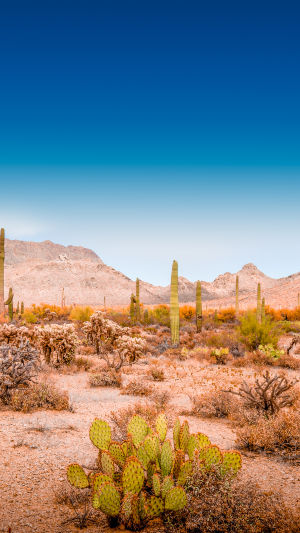Amidst the vast and arid landscapes of the desert, lies a mesmerizing sight that captivates the imagination: the desert oasis.
With its lush vegetation, sparkling water, and thriving ecosystem, this natural phenomenon stands as a beacon of life in an otherwise harsh environment.
In this article, we delve into the enchanting world of the desert oasis, exploring its unique characteristics and the awe-inspiring experiences it offers.
The Oasis: A Haven in the Desert:
A desert oasis is a haven of life nestled amidst the barren desert terrain. It typically consists of a small patch of land enriched with freshwater springs or underground water sources.
The presence of water enables a remarkable transformation, as a rich tapestry of plant life flourishes, creating a stark contrast to the arid surroundings.
Palms, tamarisks, and other resilient plants provide shade and sustenance to various creatures that call the oasis home.
Biodiversity and Wildlife:
The desert oasis supports a remarkable range of biodiversity, attracting an array of animal species. Birds, such as herons, ibises, and kingfishers, can be spotted gracefully gliding above the tranquil waters.
Mammals, including gazelles, camels, and foxes, often seek refuge in the shade of the oasis's verdant vegetation.
Reptiles, such as lizards and snakes, navigate the landscape, while amphibians and insects contribute to the delicate ecological balance.
The oasis provides a vital stopover for migratory birds during their long journeys, making it a prime spot for birdwatchers and nature enthusiasts.
Tranquil Oasis Ponds and Waterfalls :
The heart of a desert oasis lies in its shimmering ponds and gentle waterfalls. These crystal-clear waters beckon visitors to immerse themselves in their refreshing embrace.
The oasis ponds often teem with life, hosting various species of fish, crustaceans, and aquatic plants. The tranquil sound of trickling water creates a serene atmosphere, offering a respite from the scorching desert heat.
Visitors can relish the opportunity to bask in the shade of swaying palm trees, savoring the oasis's tranquility and indulging in the sensory delights of its aquatic wonders.
Cultural Significance and Human Interaction:
Desert oases have played a significant role in human civilizations throughout history. These verdant sanctuaries have provided sustenance, shelter, and valuable water resources for nearby settlements and nomadic tribes.
The cultural heritage surrounding desert oases often includes traditional farming techniques, water management systems, and intricate oasis architecture.
Today, many oases have become popular tourist destinations, offering visitors a glimpse into the rich history and cultural significance of these remarkable oases.
Exploring ancient ruins, interacting with local communities, and experiencing traditional festivities contribute to an unforgettable journey into the heart of the desert oasis.
Preserving the Oasis:
While desert oases continue to captivate our imaginations, they face threats from various factors, including climate change, unsustainable tourism practices, and water scarcity.
Conservation efforts are crucial to safeguard these fragile ecosystems for future generations to cherish and enjoy.
By raising awareness, implementing sustainable practices, and supporting local initiatives, we can protect and preserve the delicate balance of life that thrives within these extraordinary desert oases.
Stepping into a desert oasis is like discovering an oasis within our souls—a sanctuary where life triumphs over adversity.
These enchanting realms offer a glimpse into nature's resilience, captivating us with their beauty and serenity.





